A SEALFIT KOKORO Coach’s Experience
First, Kokoro from my athlete’s perspective
In 2010, I sought out a new endurance challenge and found it in the 50-hour non-stop, no sleep SEALFIT Kokoro. This crucible event is inspired by the US Navy SEAL Hell Week. I was proud to be with a team of recently-bonded brothers as we finished it, and I actually enjoyed about 99% of the experience! Completing Kokoro was an eye-opening experience for me.
To be clear at the onset, Kokoro is not US Navy SEAL Hell Week. The intention, duration, and intensity between these events are much different, as are the stakes. Kokoro also isn’t comparable with the depth and breadth of just about any Special Forces selection. But it’s still one hell of a gut check for civilians and a solid training tool for those aspiring to make it through any special forces selection or to learn more about what they are truly capable of.
In my experience, the challenge wasn’t so much about the physicality required, but rather the mental and psychological demands it places on participants. Don’t get me wrong, it was physically grueling! But growth happens outside of one’s comfort zone, and after years of ultra-running and triathlon, I felt somewhat comfortable with the physical part.
Finding Your Growth Moment
For me, growth happened in dark moments in the chilly December Pacific Ocean surf, when doubt first crept into my mind and I realized just how much cold water can suck. Not letting that fear own me was a key growth moment.
Growth happened as well on the side of a mountain while figuring out how to lead a team through the challenging hours of a second night without sleep. We had to complete an evolution as a team in a specified time hack–a target that seemed at major risk. I felt I could take the two strongest team members and finish the evolution within the time requirement, while the others rested or slept. But that option wasn’t permitted.
Not having that option took me out of my comfort zone and offered an important lesson on leadership. I had to learn to lead the team that existed in that moment, in the circumstances directly in front of us, not some ideal set of circumstances that existed only in fantasy. This was a scenario I’d encountered as both a leader and team member in business but had never explored with the depth and intensity present at Kokoro.
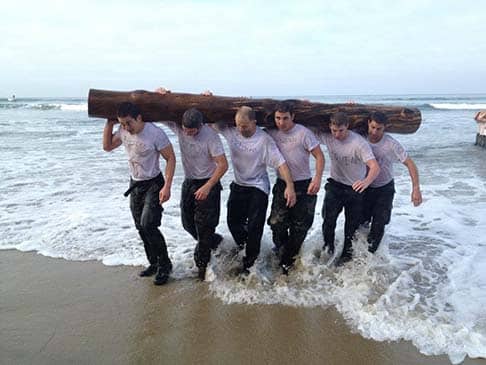
An insider’s perspective as a Kokoro Coach
After securing a finish at Kokoro 13, I began to work as an intern coach at the event during some important years when a team of great folks worked together to enable the Kokoro experience to mature. I eventually earned a coaching position at both the SEALFIT Academy and Kokoro Camp. For five years, I traveled back and forth between Switzerland and California, ultimately coaching at 15 of these events, speaking at Unbeatable Mind events, and coaching many athletes toward their own Kokoro finishes. While I was known for bringing the pain on the hills and through running, I really felt the most drawn to coaching participants through their low points to find their will to push onward and get more from themselves.
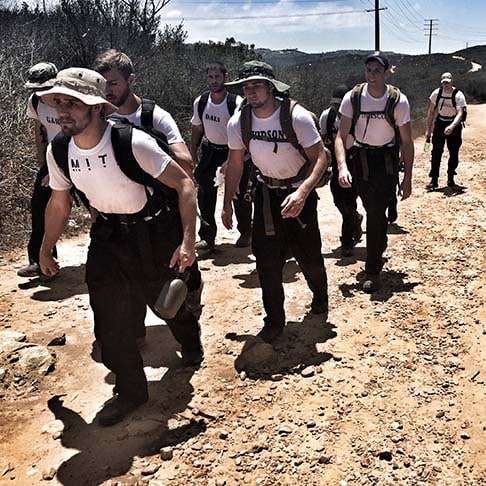
The coaching team was comprised of former Navy SEAL operators and top civilian coaches. I never served in the military, so this experience was a small way to sample at least the training side of a world I honestly had very little contact with in my life, yet respected and wanted to honor. It was a real privilege, especially as a civilian, to work with such a high calibre team of coaches and warrior athletes. Each coach brought something special to the table, and the richness of backgrounds and experiences offered the participants an unforgettable, life-changing experience.
Nothing quite like this
Nothing quite like this existed anywhere else at the time, which made being a part of these transformational events a highlight of my life and work as a coach.
While Kokoro Coaches are excellent at delivering adversity, the end-goal is to guide athletes to a stronger version of themselves: physically, mentally and emotionally — with greater awareness and a stronger spirit. With that in mind, I’d like to share my thoughts on how to be better prepared to thrive at SEALFIT Kokoro. This article is about preparation, not about what happens when you show up. I’ll write more about that separately.
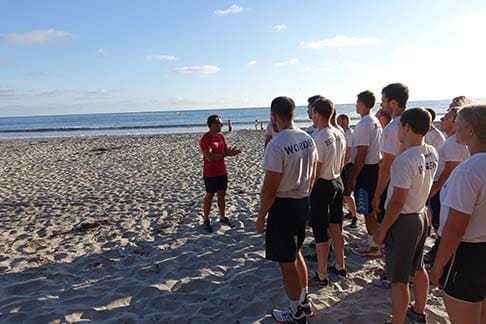
Train to overcome the reasons most people quit
One of our key tasks as instructors was to figure out how to unravel an athlete, how to break them. After that, we’d work to build them back up. For some athletes, the breaking process was easy and took very little work. I always marveled at how people would spend thousands of dollars to show up on the Grinder, and then crumble after a few minutes of bodyweight exercises while being yelled at and sprayed in the face with water. There’s enough on YouTube now that this element of the training should not be a surprise. If you’re not enjoying the breakout, Kokoro is the wrong place for you.
For those who survive the breakout, but later quit, the most common causes I observed can be traced back to the following failures in their training program:
- Not training for the mission
- Too little time rucking and running
- Not enough focus on adversity training: cold, rain, heat, fatigue
- Training with the wrong gear
- Not training with an evolution mindset
- No experience with sleep deprivation and extremely long activities
- No team experience
- Not approaching Kokoro as a Moonshot
- Not rehearsing the “you should quit” conversation
Let’s talk about how to overcome each.
Train smart for the task at hand
The number one preparation failure I saw from a coach’s perspective at 15 Kokoro Camps is that many athletes underestimate the running and rucking demands. I saw time and time again athletes who looked amazingly fit get crushed on running and rucking evolution components.
It takes much, much more than a good Fran time to thrive at Kokoro. I often saw bodybuilder types unravel with simple bodyweight exercises and other functional movements with logs and sandbags. And I observed endurance athletes who were missing the functional strength and skills to carry people/logs and haul themselves up on a pull-up bar or rope.
The lesson is: Train hard, but also train smart for the task at hand. What follows are my insights into how to train for the task at hand.

Spend more time Rucking and Running
On top of a large and consistent volume of functional training sessions (Coach Brad McLeod’s SEAL Grinder PT training programs highly recommended), you’ve got to build a significant base of running and rucking (with weight) in a variety of terrains (soft sand, hard sand, surf, trail and off-trail, hills, etc.).
By “significant” I mean much, much more than a few times in the weeks before Kokoro. You need months of consistent rucking and running in boots. Your training should also include months of progressively longer runs in running shoes. And you need months of endurance training and testing yourself under the pressure of racing, time trials against your prior times, sprints against friends, etc. How many months is based on your background as an endurance athlete. CrossFit alone will not get you where you need to be to complete Kokoro with the best experience you’re capable of. Put the time in on your feet – it’s worth it.
Run and ruck long
I coach Kokoro-bound athletes to run at least a half marathon in training, if not a full marathon. On top of that, I incorporate long rucks into their training plan on the day after long runs. This includes overnight rucks and rucks in all weather conditions–the worse the weather, the better for training. Your longest run ever should not be at Kokoro. Same goes for your longest ruck — it should not be at Kokoro.
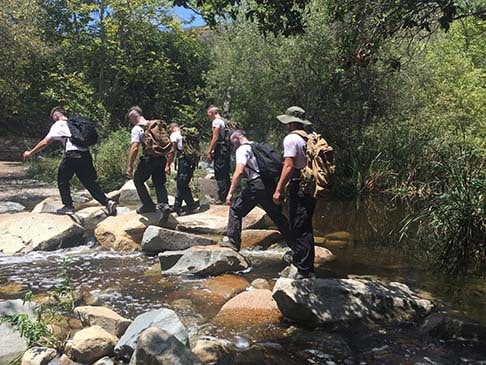
You don’t need to run an ultra marathon before your Kokoro, although I’m glad I had that experience before mine. If you’re going into Kokoro with at least a 12+ hour ruck under your belt, you’ll be much better prepared than athletes who show up with only a few half-day hikes.
Mix it up with speed training & resisted running
Make sure as well that you run in the middle of your rucks. Add sprint sessions when you feel tired, at all the times you feel the least motivated to run hard.
I recommend including in your training program not only long rucks and runs, but also speed training while running. My ebook for SEAL Grinder PT, Run Faster: Unlock your Speed in 8 Weeks, covers this in detail and includes an 8-week speed training program. At the end of 2019, I launched another program called Running Heavy that includes an 8-week plan and library of workouts for resistance running (weight vest, dragging tires and sleds, and pushing prowlers). Both of these programs were designed with Kokoro athletes in mind, using my coaching approach and programming that has supported a lot of athletes in securing their Kokoro.
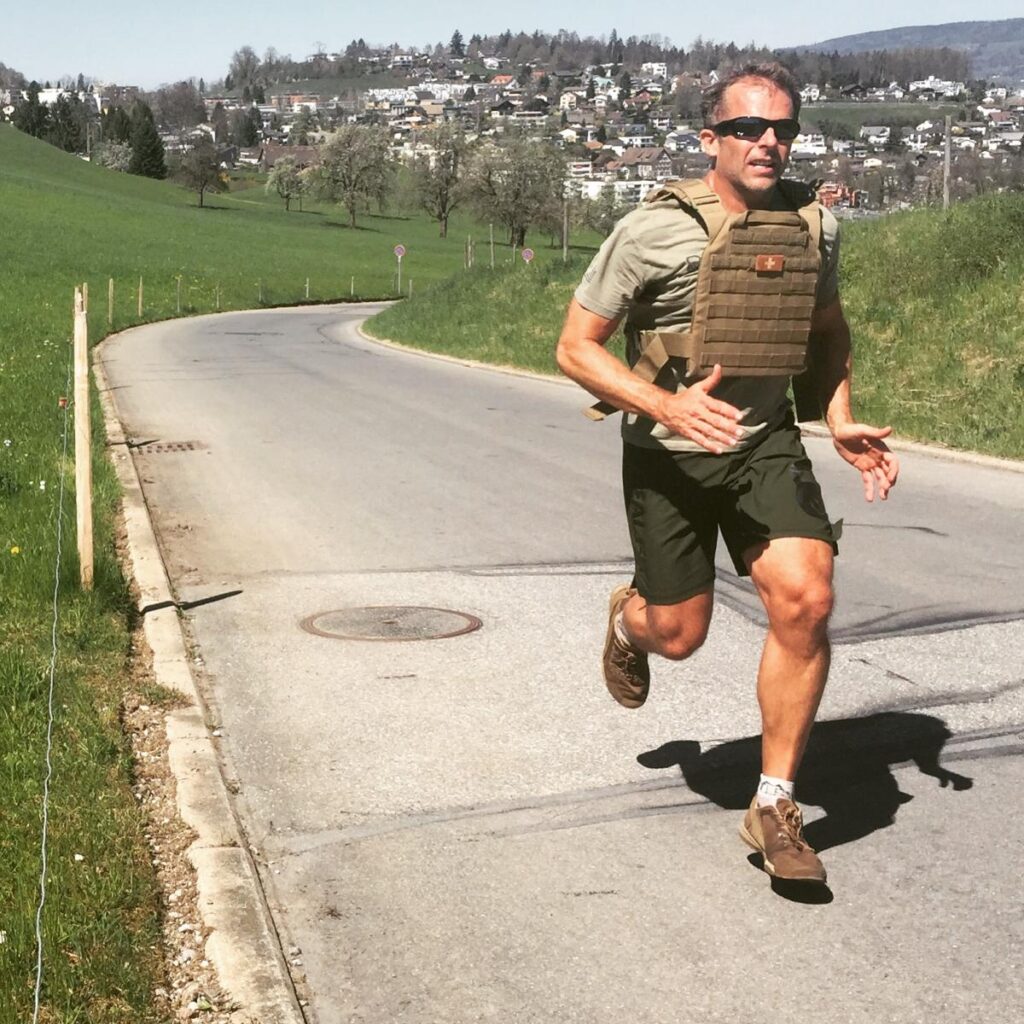
Walk whenever possible
I encourage trainees to walk as much as possible in the months before Kokoro. If it’s walkable, get where you need to be on foot. Walk your commute, or part of it. Walk to buy groceries. And while you’re walking, wear a cheap, uncomfortable rucksack or carry a sandbag. Here’s how I made a cheap DIY sandbag I train with.
The more you integrate your training into your day-to-day life, and the more you make your training worse than the event, the better prepared you’ll be to succeed at Kokoro.
Did I say it enough? Run and Ruck MORE when preparing for Kokoro.
Integrate Discomfort and Adversity Training into your plan
I thought my experience as a Dive Master and my comfort in the water as an Ironman Triathlete would prepare me for all the water-related challenges of Kokoro, but that wasn’t the case. There’s a huge difference between A) diving or open water swimming and B) surf torture. And that difference is that with the former, you are physically active and focused on a movement-oriented task. With the latter, surf torture or ice bath immersion, you are primarily lying still and fully in the suck. Lying on my back in the ocean at 3AM as waves rolled in was an entirely new experience. And it sucked until I built some experience and quit fighting the discomfort.
Surfers are often the best acclimated to spending long periods of time in cold water, but you don’t have to be a US west coast surfer to get comfortable being uncomfortable in cold water. I coach Kokoro-bound athletes to get in cold water often in their training, but not with the cold shower or occasional ice bath approach. Sure, include that in your plan, but for Kokoro mental prep, that’s too predictable and easy. Better is to jump in a lake in your regular training clothes (or Kokoro-type pants, t-shirt, boots) and run home wet and uncomfortable. Then, right before you go inside — if it’s cold outside — stand in the wind with your arms out to the side for several minutes focusing on slow, deep breaths.
After that, don’t go inside, but instead knock out a set of 100 burpees … and then, repeat the whole thing again. That’s more in the direction of Kokoro and will serve you better than a routine of cold showers.
Embrace adversity
Years later, I would spend a winter swimming in Swiss lakes in extreme temperatures, employing the same lessons that worked in Kokoro. It’s just water. Create inner warmth with your breath and relax into the cold water, instead of fighting it. Don’t make it worse than it needs to be.
Include more adversity training in your program. Run after swimming while still wet. Ruck in the rain, in the fog, in the middle of the night, and in as many other circumstances as you can. Train outside without a jacket in the winter. Build experience getting comfortable in adverse conditions.

Train with the right gear
It sucks to run in boots and wet pants. It’s as annoying AF to wear a heavy, cheap canvas rucksack for a few days and a couple of nights while rucking and doing endless burpees, push-ups and squats. No padded hip belt and no sternum strap. One shoulder strap will likely break during Kokoro. A sand-chafed crotch and bloody nipples .. yep, total buzzkill. A wet, cotton t-shirt as your only “warm” layer. An old military canteen instead of your camelback. This list goes on and on.
Kokoro isn’t supposed to be comfortable. If you train only in high-end, lightweight, comfortable gear, you’ll be in for a big surprise at Kokoro. And that surprise is enough to drive some people to quit. During Kokoro, I had athletes climb into the truck often complaining of chafing so bad that they couldn’t go on, or of tender shoulder abrasions from their rucksacks. And there are always quitters complaining of blisters from wet boots or loose socks. Don’t let gear be the reason for quitting.
My advice is to train often in your boots and get comfortable rucking and running in them while they are wet. Hammer your feet with hiking in all weather conditions. Make them TOUGH. Spend time carrying an uncomfortable, cheap rucksack only by the shoulder straps. Train with sandbags, tires, and other odd pieces of heavy equipment. Decide how you’re going to handle chafing issues (e.g. using compression shorts) and practice with your planned solution. Do a long ruck after getting wet and rolling around in sand. Build some experience wet and cold in a cotton t-shirt. Do farmer carries to build grip strength for stretcher carries.
I get lots of emails from people asking about shoes, boots, rucks and book recommendations for Kokoro and other crucible training. To save you a little time, here’s a quick shopping list I made on Amazon with some of my favorites, and the equipment I recommend for a no-BS home gym.
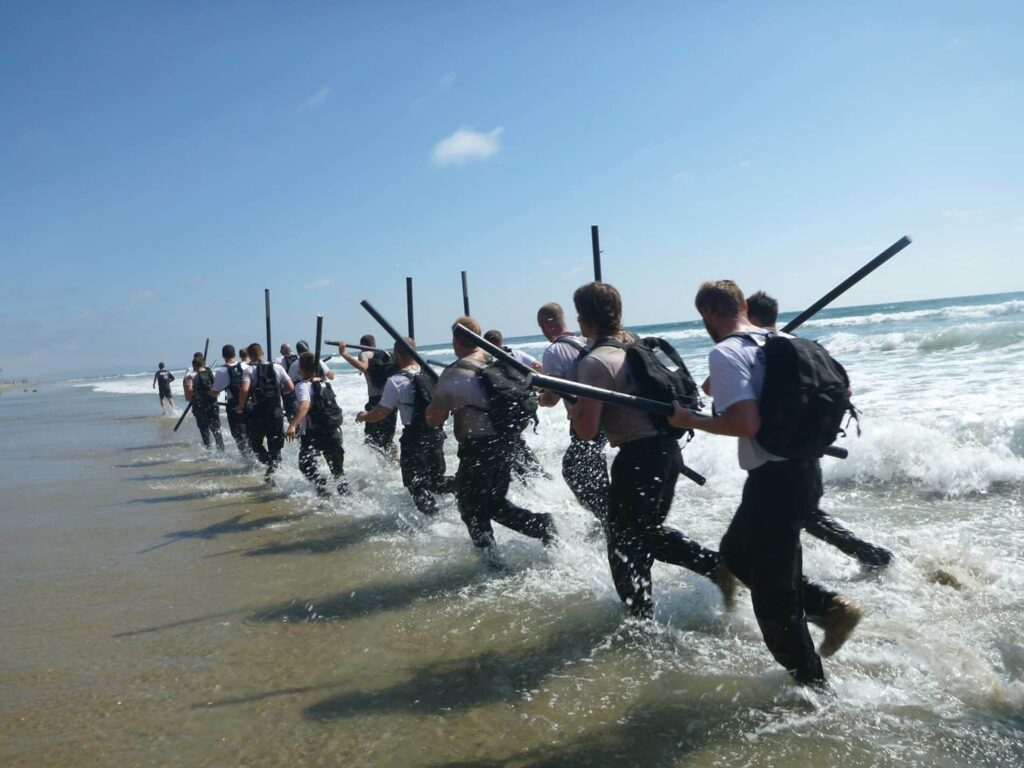
Train with an evolution mindset
To succeed at Kokoro, you have to take it one evolution at a time. Give your best effort for each evolution without thinking of the past or future, and then move on. This evolution mindset can reside consistently in your mind only when you can break yourself from the habit of fixed duration or fixed distance training. Your training sessions should mimic an evolution model. You need long sessions, short & brutal workouts, a mix of workout durations in one day, and spontaneous challenges where you’re not decked out in a CrossFit uniform with knee wraps, wrist straps, and chalked hands.
Here’s what I mean
Want an example? Stop reading this article and do 250 burpees. Right now … 250 burpees.
Done? Continue reading after you complete a total of 10 minutes in a plank in as few sets as possible.
Got your 10 minutes of planking done? Ok, you’re on the right track.
Keep throwing challenges to yourself without thinking about how long they will take or how hard they will be. Grab some friends and drag a tractor tire up a hill. Build an igloo. Drag a fallen tree through the forest. Unload and reload a pallet of cement mix at your home improvement store for a free workout that will confuse employees and hopefully not get you kicked out before you finish. You get the idea.
The next time you do a burpee, follow-it up with another 499. If you’re the type of person who will actually do this, or will have finished it before tomorrow, you’re the right kind of person for succeeding at Kokoro.
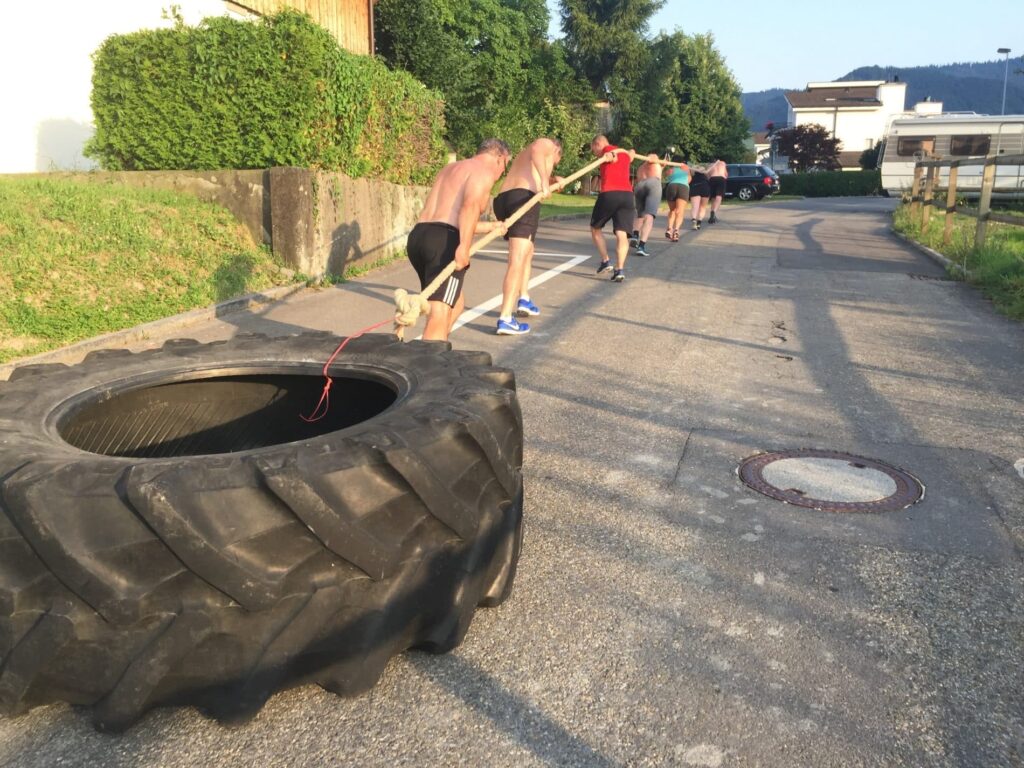
Build experience with sleep deprivation and extremely long activities
One of my most challenging endurance events was a 24-hour ruck that was on flat terrain the last 14 hours. I found this tougher than running 24 hours in the mountains. The variation of the terrain and mix of running with hiking was easier on the body than the monotony of just rucking. And this made the sleep deprivation more challenging.
To prepare for Kokoro, I organized a 24-hour charity workout event. We did one WOD an hour for 24 hours. Over the years, this event spread to gyms across Switzerland, raising money for the Face-to-Face Project in Malawi, Africa. We adapted the event over time to include a mix of CrossFit WODs and more evolution-oriented activities, including swimming, rock climbing, grappling, and rucking. I suggest you organize your long sessions in a similar manner. The 24-hour charity workout model will not only train you for the physical demands of Kokoro, but will also offer a good opportunity to focus on service to others.

Increase your teaming intelligence
Loners suck at Kokoro, so don’t train as a loner or train to be a loner. The more experience you have being an outstanding teammate, the better your chances of survival will be at Kokoro. Many endurance athletes struggle with this, as they typically train and perform alone. At the same time, I’ve seen elite CrossFit athletes and OCR racers struggle with the team concept as well. Star individual performance is not what Kokoro is all about. Go there as a loner and you’re unlikely to make it past 24 hours.
You can train and influence your “team intelligence” by spending more time in a team setting, as both a follower and a leader. And it doesn’t have to be just a high performing team. You’ll learn lessons as well from being on a struggling team in constant conflict.
Make an effort to learn who you are on a team and how to be the best teammate you can before you show up at Kokoro. If you’re always a leader on a team, find a team where you can be a follower for a while. If you’ve always been a solid contributor, but never a leader, create a situation where you’re leading a team.

Take the preparation as seriously as a Moonshot
Kokoro Camp hits the body hard. I found it much more grueling than Ironman Triathlons and 100-mile ultra marathons. Keep this in mind though: triathletes typically spend 6-12+ months training for an Ironman. It’s the same with ultra runners. These endurance athletes prioritize their entire lives around the goal race (often, obsessively so). I’ve finished 5 Ironmans and countless ultras and coached triathletes to dozens and dozens more. I understand the prep and obsessive-compulsive pre-race mindset well. I learned though that many athletes who struggled at Kokoro didn’t approach it with the same level of preparation as the common triathlete would approach an Ironman. This baffles me.
Kokoro is a moonshot for most people, so approach it as such. Put the time in and that time in the right training areas – it’s worth it!
If you want to secure a finish, you have to earn it. This starts with being able to meet the standards and operate well as a functional athlete. It’s not easy to get Kokoro-ready, but it’s worth it. If you’re looking to go into special forces and are using Kokoro for training, I suggest you check out as well the SOF Prep Academy. Lance Cummings, a US Navy SEAL for over 30 years, runs this world-class program. We worked together years ago at SEALFIT and I’ve seen him build an incredible program since.
Have the “reasons you should quit” conversation before you get to Kokoro
During Kokoro, most participants will reach a point at least once, where their minds will offer up an incredibly compelling reason to quit. It usually goes like this — it’s time to call it quits because:
- You’ve already learned what you came here for
- You’ll risk long-term injury if you continue
- Everyone else here is … younger, stronger, better prepared, etc.
- There’s no way you can do another … push-up, burpee, ice bath immersion, hill sprint, evolution, etc.
- 30 hours or 24 hours .. or 16 hours is enough to feel good about yourself.
- This year just isn’t your year. You worked too much, needed/wanted to spend more time with your family, etc.

Visualize that conversation
Rather than wait for Kokoro for that conversation to arrive, often catching you at an extreme low point and moment of weakness, have the conversation well in advance of Kokoro. Make a list of all the reasons for quitting that you can imagine yourself in a moment of extreme fatigue and weakness expressing. Be creative when compiling this list and think fully in your weakest possible state of mind.
Then, visualize each conversation happening. Include as much detail as possible in that visualization: your state of fatigue, the aches in your body, chafing from sand, cold or heat, hunger, weather, etc. Imagine in that state receiving each reason from your brain. Then — and this is important — visualize yourself overcoming that reason and pushing through it. Visualize yourself reaching the end of the evolution and being grateful you didn’t listen to the reason and quit.
If you complete this exercise, you won’t be surprised at Kokoro when your brain gives you a reason to quit. Like a pilot who has practiced for emergencies in a simulator, you’ll recognize the situation and run through your checklist of practiced actions to resolve it. You may even laugh during Kokoro when the reason shows up in your mind. “Hey Reason to Quit — I was expecting you. Welcome to the party — now get the F out!”
Earn your finish
Enjoy the training and preparation phase, as it is its own special journey and may bring you as much value, if not more, than the actual event. When you get to Kokoro, open all your senses, learn, look after your teammates and always put out 100%. You’ll thrive, you’ll grow, and you’ll experience something to influence how you live the rest of your life.
The years I spent coaching at Kokoro left a lasting impression. Eventually, the travel demands were too great for me to continue the 9-time zone commute while running a writing and coaching business in Europe. These days I primarily coach high-performers in achieving the impossible and tackling transformations in business and life. But my heart is always in Kokoro, so I continue to coach a small number of athletes each year to achieve their Kokoro dream.
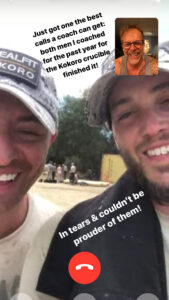
If you’re interested in my support in helping you reach your Kokoro goal or take on even bigger challenges in life, please reach out to me. You can book a free 15-min intro chat directly here: https://calendly.com/jeffgrant
Train hard, live outside your comfort zone, and get all you can out of life!
— Coach Jeff

